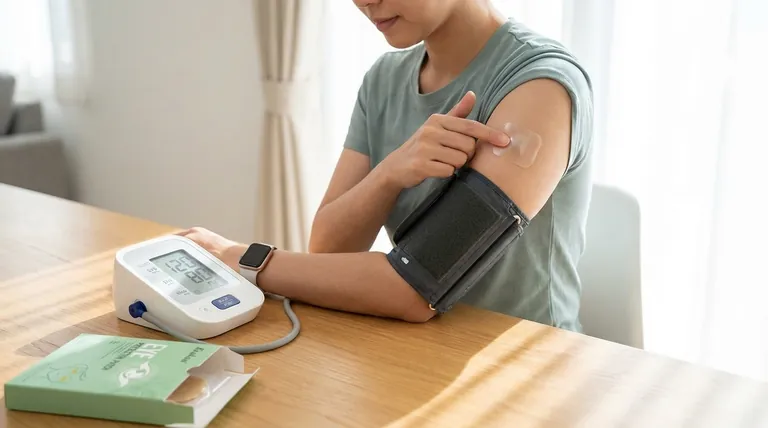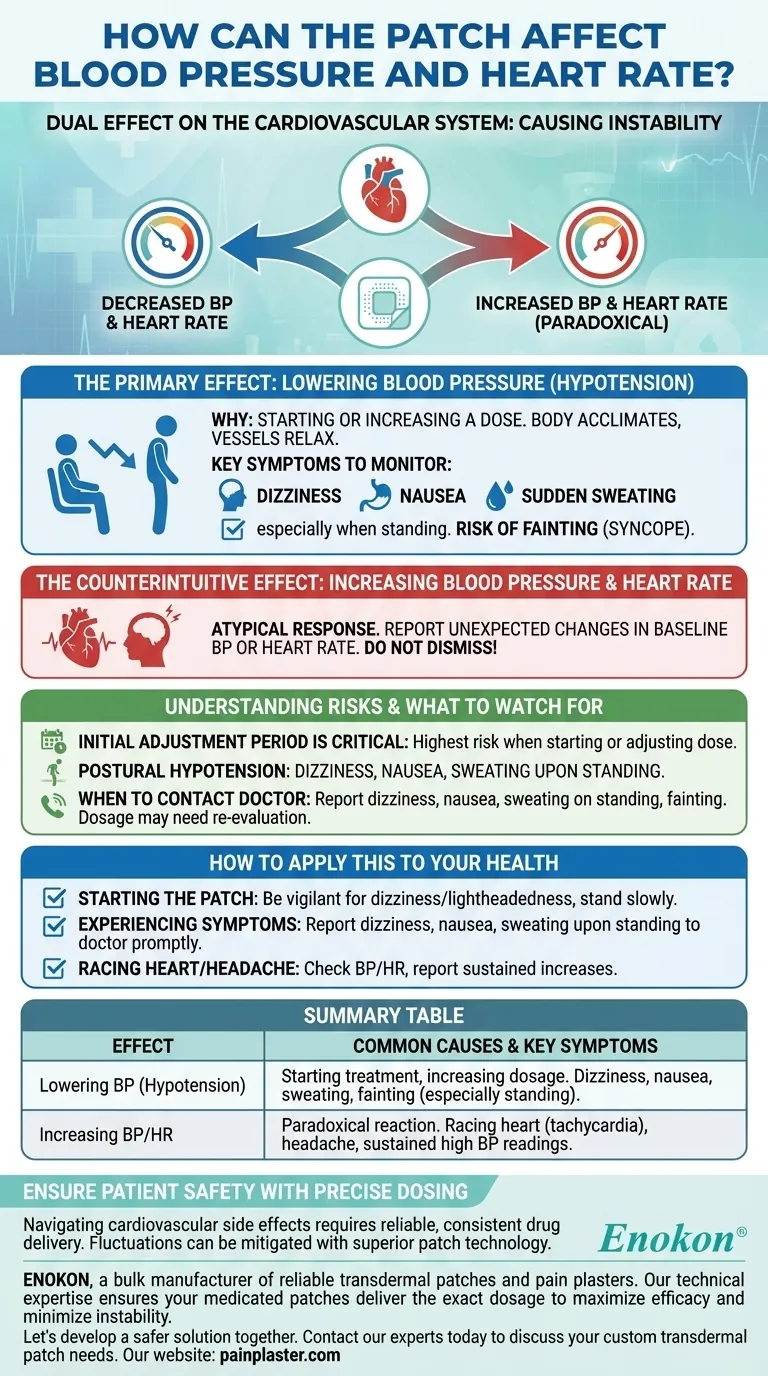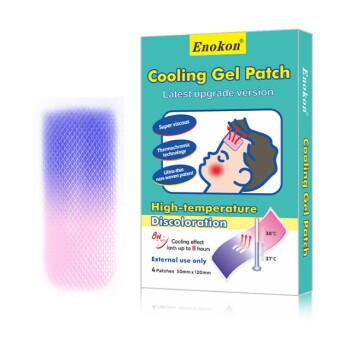The patch can have a dual effect on your cardiovascular system. It can cause significant decreases in blood pressure, particularly when you first start treatment or increase your dosage, but it may also lead to paradoxical increases in both blood pressure and heart rate.
The central issue is cardiovascular instability. While the patch is often intended to manage or has a side effect of lowering blood pressure, your body's reaction can vary, making it critical to monitor for symptoms of both high and low blood pressure, especially during the initial adjustment period.

The Primary Effect: Lowering Blood Pressure
The most common cardiovascular effect noted is a decrease in blood pressure, a condition known as hypotension.
Why This Happens When Starting or Increasing a Dose
Your body requires time to acclimate to the medication delivered by the patch. The introduction of the active ingredient, or an increase in its concentration, can cause your blood vessels to relax, leading to a drop in pressure.
Key Symptoms to Monitor
This drop in blood pressure can manifest as specific physical symptoms. Be vigilant for feelings of dizziness, nausea, or sudden sweating, especially when moving from a sitting or lying position to standing.
The Risk of Fainting
A sudden or significant decrease in blood pressure can reduce blood flow to the brain, which can lead to fainting (syncope). This is a serious side effect that should be addressed immediately with your healthcare provider.
The Counterintuitive Effect: Increasing Blood Pressure and Heart Rate
While less common, the patch can also cause the opposite reaction: an increase in blood pressure (hypertension) and heart rate (tachycardia).
Understanding This Paradoxical Reaction
The precise reasons for this effect can vary depending on the specific medication in the patch. However, it represents an atypical response that your body is having to the treatment.
The Importance of Reporting Changes
Any unexpected increase in your baseline blood pressure or heart rate is just as important to report as a decrease. Do not dismiss these changes, as they may require an adjustment to your treatment plan.
Understanding the Risks and What to Watch For
Proper management involves recognizing the signs of cardiovascular changes and knowing when to act.
The Initial Adjustment Period is Critical
The risk for these side effects is highest when you first begin using the patch or when your doctor adjusts the dose upwards. Pay close attention to how you feel during this time.
Postural Hypotension: The "Standing Up" Effect
The symptoms of dizziness, nausea, or sweating upon standing are classic signs of postural (or orthostatic) hypotension. This is a drop in blood pressure caused by a change in body position.
When to Contact Your Doctor
You should report any of the symptoms mentioned—dizziness, nausea, sweating upon standing, or fainting—to your doctor. These are clear indicators that your body is reacting to the medication and your dosage may need to be re-evaluated.
How to Apply This to Your Health
Your primary goal is to maintain cardiovascular stability while on this treatment. Use these guidelines to work effectively with your healthcare provider.
- If you are just starting the patch: Be extra vigilant for dizziness or lightheadedness, and make sure to stand up slowly from a seated or lying position.
- If you experience any dizziness, nausea, or sweating upon standing: Report these specific symptoms to your doctor promptly, as they are key indicators of a blood pressure drop.
- If you feel your heart racing or have a headache: Check your blood pressure and heart rate if possible, and report any sustained increases to your provider.
By carefully monitoring for these potential effects, you can help ensure your treatment is both safe and effective.
Summary Table:
| Effect | Common Causes | Key Symptoms to Monitor |
|---|---|---|
| Lowering Blood Pressure (Hypotension) | Starting treatment or increasing dosage. | Dizziness, nausea, sweating, fainting (especially when standing up). |
| Increasing Blood Pressure/Heart Rate | A paradoxical reaction to the medication. | Racing heart (tachycardia), headache, sustained high blood pressure readings. |
Ensure Patient Safety with Precise Dosing
Navigating the cardiovascular side effects of transdermal medication requires patches with reliable, consistent drug delivery. Fluctuations in blood pressure and heart rate can often be mitigated with superior patch technology.
Enokon, a bulk manufacturer of reliable transdermal patches and pain plasters, partners with healthcare and pharma distributors and brands to enhance patient outcomes. Our technical expertise in custom R&D and development ensures your medicated patches deliver the exact dosage needed to maximize efficacy and minimize instability.
Let's develop a safer solution together. Contact our experts today to discuss your custom transdermal patch needs.
Visual Guide

Related Products
- Herbal Eye Protection Patch Eye Patch
- Natural Herbal Wormwood Patch Pain Plaster
- Prostate Pain Kidney Health Care Patch for Men
- Menthol Gel Pain Relief Patch
- Icy Hot Menthol Medicine Pain Relief Patch
People Also Ask
- How can using eye patches contribute to a self-care skincare routine? Boost Hydration & Relaxation
- What factors should be considered when purchasing eye patches? Essential Guide for Safe & Effective Use
- What are the steps for applying under-eye patches? Boost Your Eye Care Routine
- Should under eye patches be applied before or after moisturizer? Optimize Your Skincare Routine
- How do eye patches enhance the effectiveness of eye creams? Boost Your Eye Care Routine











